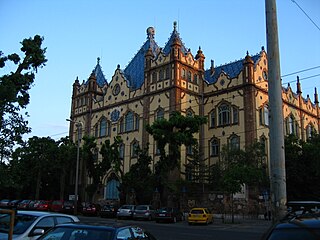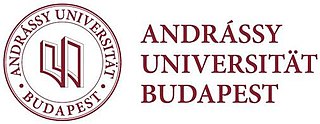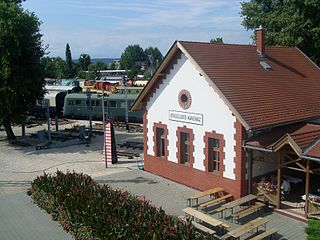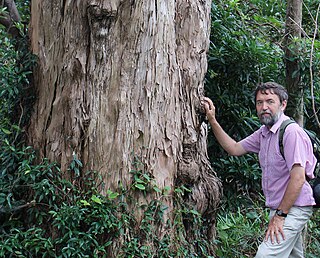Related Research Articles

Budapest is the capital and the most populous city of Hungary, and the tenth-largest city in the European Union by population within city limits. The city has an estimated population of 1,752,286 over a land area of about 525 square kilometres. Budapest is both a city and county, and forms the centre of the Budapest metropolitan area, which has an area of 7,626 square kilometres and a population of 3,303,786, comprising 33% of the population of Hungary.

Dr Emerich Frivaldszky von Frivald, known as Imre Frivaldszky, was a Hungarian botanist and entomologist.

Gyula Horn was a Hungarian politician who served as the third Prime Minister of the Republic of Hungary from 1994 to 1998.

The Budapest Ghetto was a Nazi ghetto set up in Budapest, Hungary, where Jews were forced to relocate by a decree of the Hungarian Government during the final stages of World War II. The ghetto existed only from November 29, 1944 - January 17, 1945.

Keszthely is a Hungarian city of 20,895 inhabitants located on the western shore of Lake Balaton. It is the largest city by the lake and one of the more important cultural, educational and economic hubs in the region. Due to its favorable location and accessibility by both road and rail, Keszthely and the surrounding area is a preferred holiday destination.
Kálmán Kertész (2 January 1867 Prešov, Sáros County – 28 December 1922 Budapest was a Hungarian entomologist mainly interested in Diptera.

Ödön Lechner was a Hungarian architect, one of the early representatives of the Hungarian Secession movement, called szecesszió in Hungarian, which was related to Art Nouveau in the rest of Europe. He decorated his buildings with Zsolnay tile patterns inspired by old Magyar and Turkic folk art. The Magyars were a people that came from the east, which explains the eastern-like appearance of Lechner's buildings. He combines this with the use of materials modern for his time, such as iron.

The Geological Museum of Budapest or Hungarian Institute of Geology and Geophysics is the main museum of geology in Hungary. It is located on the Stefánia út in the western part of Pest.

The Hungarian National Museum was founded in 1802 and is the national museum for the history, art and archaeology of Hungary, including areas not within Hungary's modern borders such as Transylvania; it is not to be confused with the collection of international art of the Hungarian National Gallery. The museum is in Budapest VIII in a purpose-built Neoclassical building from 1837–47 by the architect Mihály Pollack.

The Hungarian Natural History Museum in Budapest, dating back to 1802, houses the largest natural history collections of Hungary and the region.

Andrássy University Budapest (AUB) is a private university in Budapest, the capital of Hungary. Andrássy University Budapest was founded in 2001 and is the only completely German-language university outside the German-speaking countries. As a European university in Hungary, it is supported by five partner states and also by Switzerland and the autonomous region of Trentino-South Tirol.

The following outline is provided as an overview of and topical guide to Hungary:

Hungarian art stems from the period of the conquest of the Carpathian basin by the people of Árpád in the 9th century. Prince Árpád also organized earlier people settled in the area.

Miklós Kretzoi was a Hungarian geologist, paleontologist and paleoanthropologist and Széchenyi Prize winner.

The Magyar Vasúttörténeti Park is a railway museum located in Budapest, Hungary at a railway station and workshop of the Hungarian State Railways (MÁV), the former Budapest North Depot. The museum covers more than 70,000 square meters and it features over one hundred exhibits, mostly including railway vehicles and equipment.
József Sándor Krenner or Joseph Krenner was a Hungarian mineralogist. He discovered several new minerals.

Rácz István is a Hungarian dendrologist, curator, and museologist.
Ilona Csepreghyné-Meznerics, née Meznerics, was an Hungarian stratigrapher and invertebrate paleontologist.
References
- Horn and Schenkling 1928-1929.Index Litteratuae Entomologicae Horn, Berlin-Dahlem.